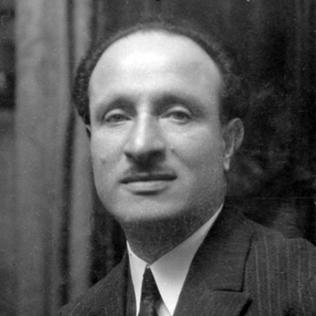Charles Garabed Atamian was born on September 18, 1872, in Constantinople. He completed his early education at the Mekhitarist School in the district of Pera (now Beyoglu) and then attended the Lycée de Saint-Benoit, a French school. He continued his education at the Moorat-Raphaël College of the Mekhitarist Congregation (Venice) between 1887 and 1893. He studied for a short while at the Academy of Fine Arts in the Italian city, but then returned to Constantinople and worked at the Yildiz Porcelain Factory from 1894 to 1896 as the factory’s chief designer. A number of his porcelain plates bearing his signature “Atam” are now exhibited at the Topkapi Palace.
His first exhibition in Constantinople was held before the Hamidian massacres of 1896, but due to the unfavorable political atmosphere, his work failed to create interest. Like many other Armenians from Constantinople, Atamian left the country in 1897 due to the massacres and sought refuge in Paris. He became a book illustrator and his work graced the pages of about 150 volumes, including such famous authors as Anatole France, Guy de Maupassant, and Henri Bordeaux.
Atamian created commercial artwork and worked for leading French newspapers and magazines such as L’Illustration and Le Monde Illustré. He also created artwork for theatrical productions.
Starting in 1903 at the Salon d’Automne, he participated in various exhibitions with overwhelming success. His landscapes and portraits shown at the annual exhibitions of the National Society of Artists from 1913 to 1945 are particularly noteworthy. He became a permanent member of the Society in 1927. He spent the summer holidays from 1923 to 1931 at Saint-Gilles-sur-Vie in Vendée, on the Atlantic Ocean. He developed much of his work at this summer residence and his paintings of the beach consolidated his reputation as an artist.
He had various solo exhibitions of his work in Paris, Brussels, and Strasbourg. His wife passed away in 1941. He stopped working in the same year, feeling the first symptoms of disease, although he continued his exhibitions. He died in his Parisian workshop on July 30, 1947. Many of his paintings exhibited in various cities of Europe, the United States, and Japan were reproduced as postcards. His works are in various collections, including the National Gallery of Armenia. His granddaughter bequeathed 42 paintings of the artist to the municipality of Saint-Gilles-Croix-de-Vie in 1995.

